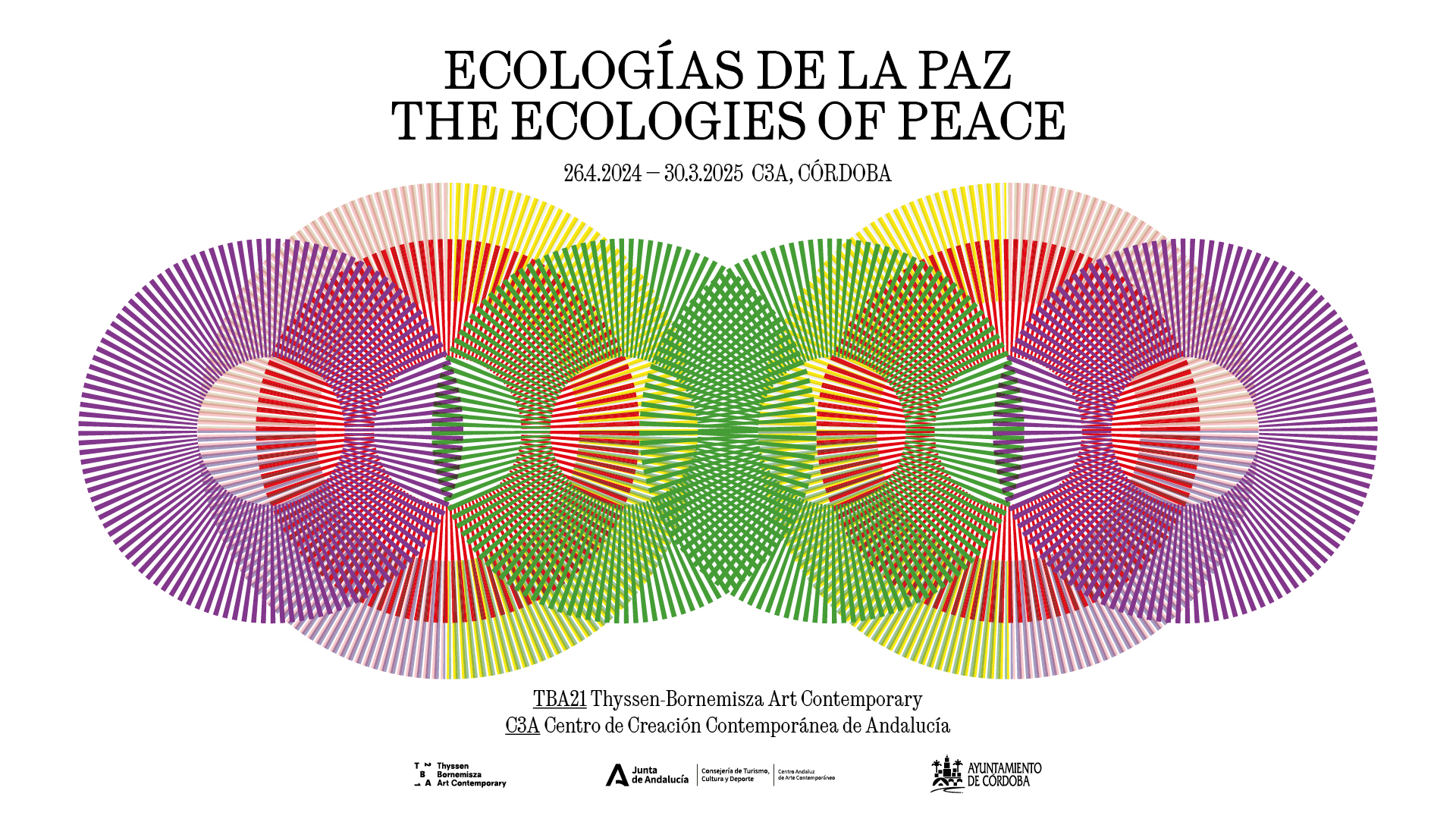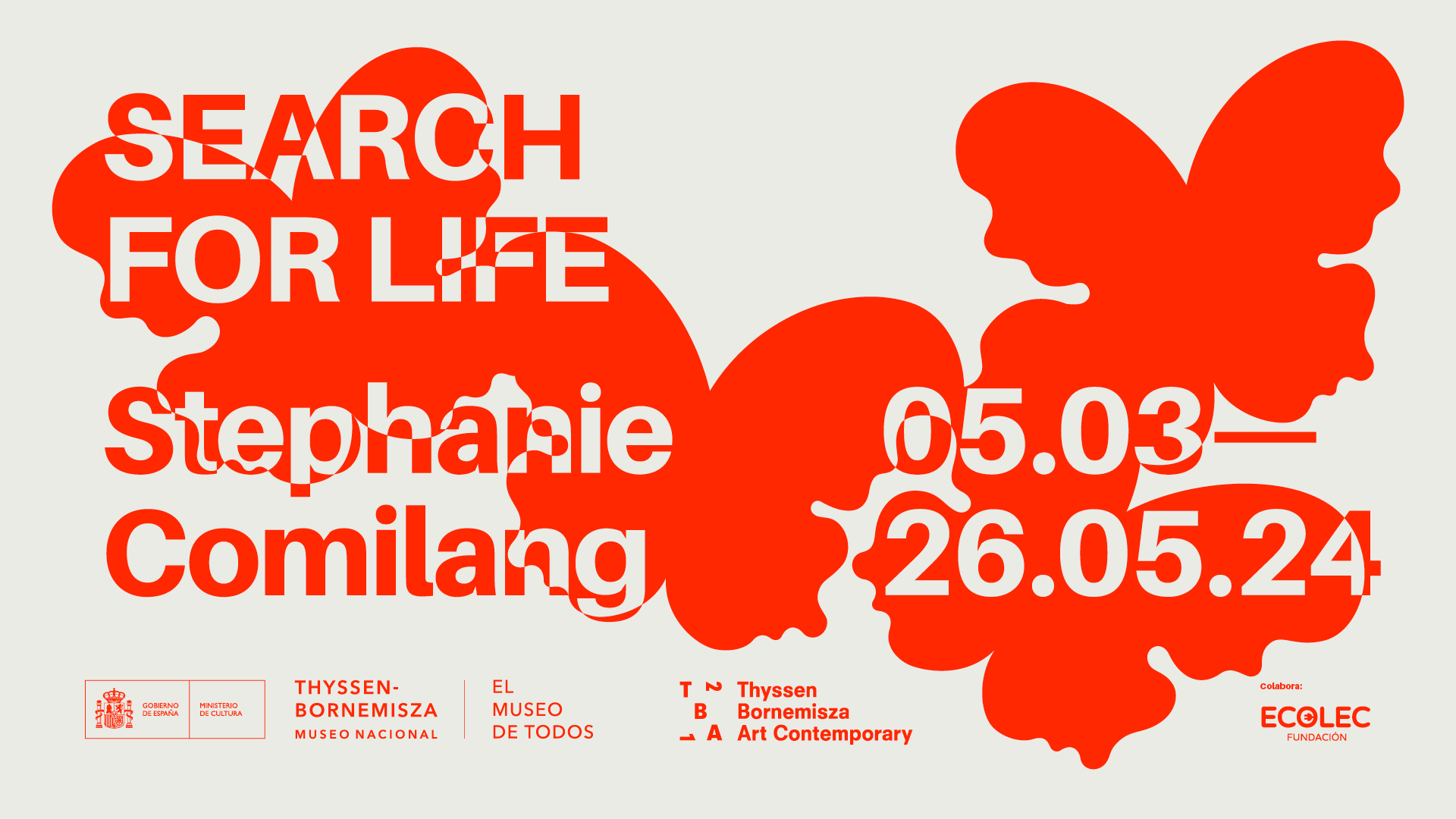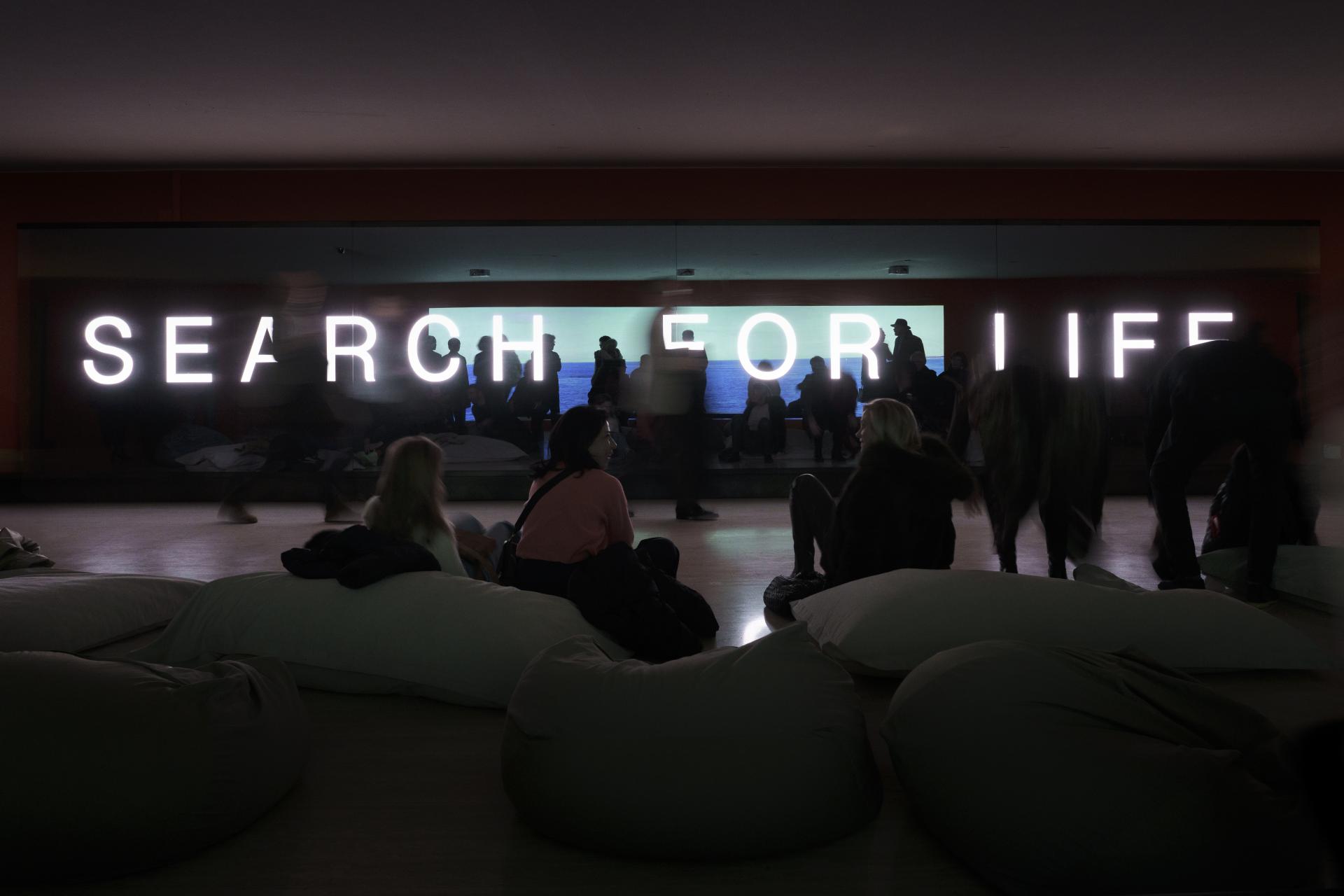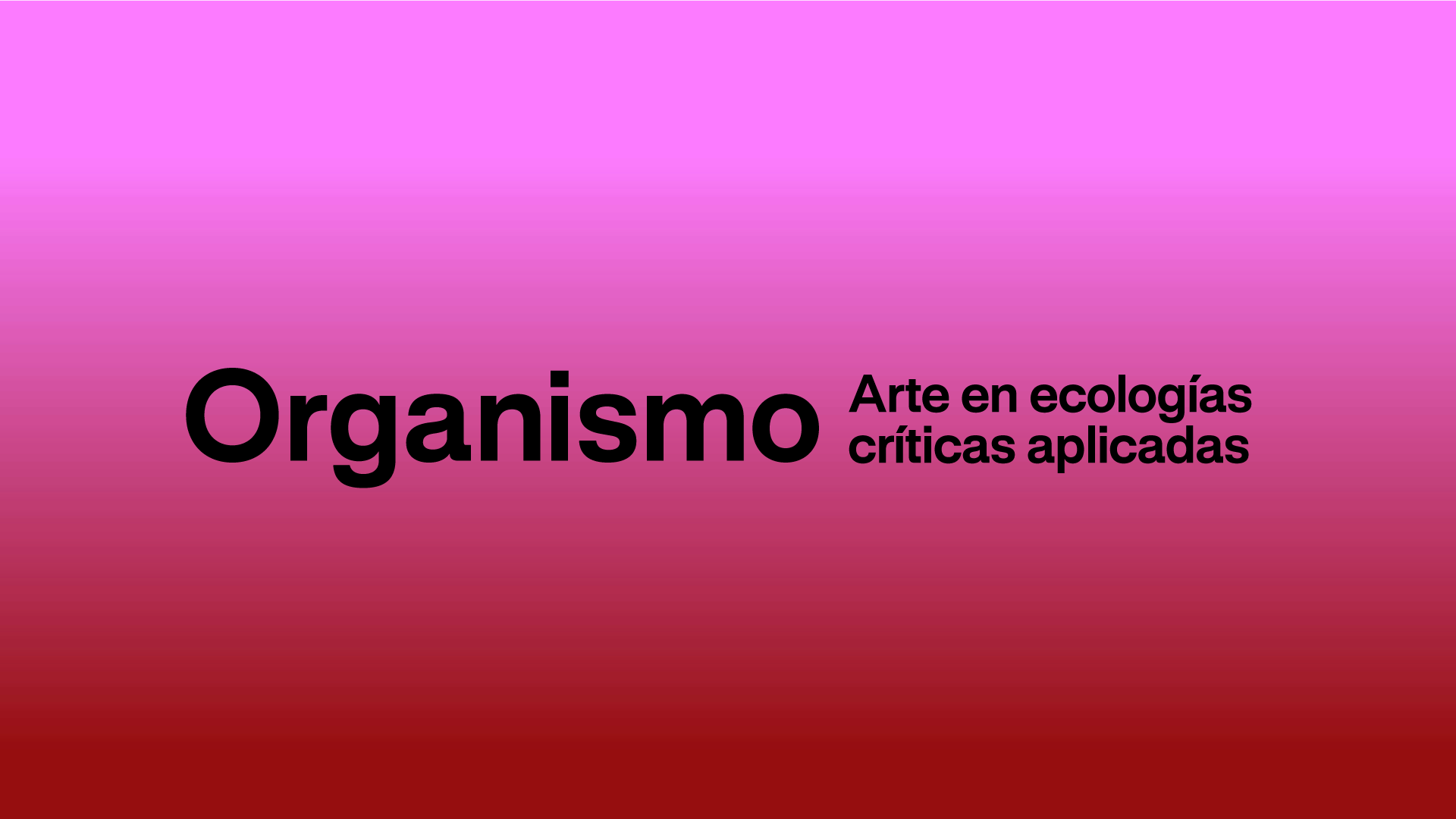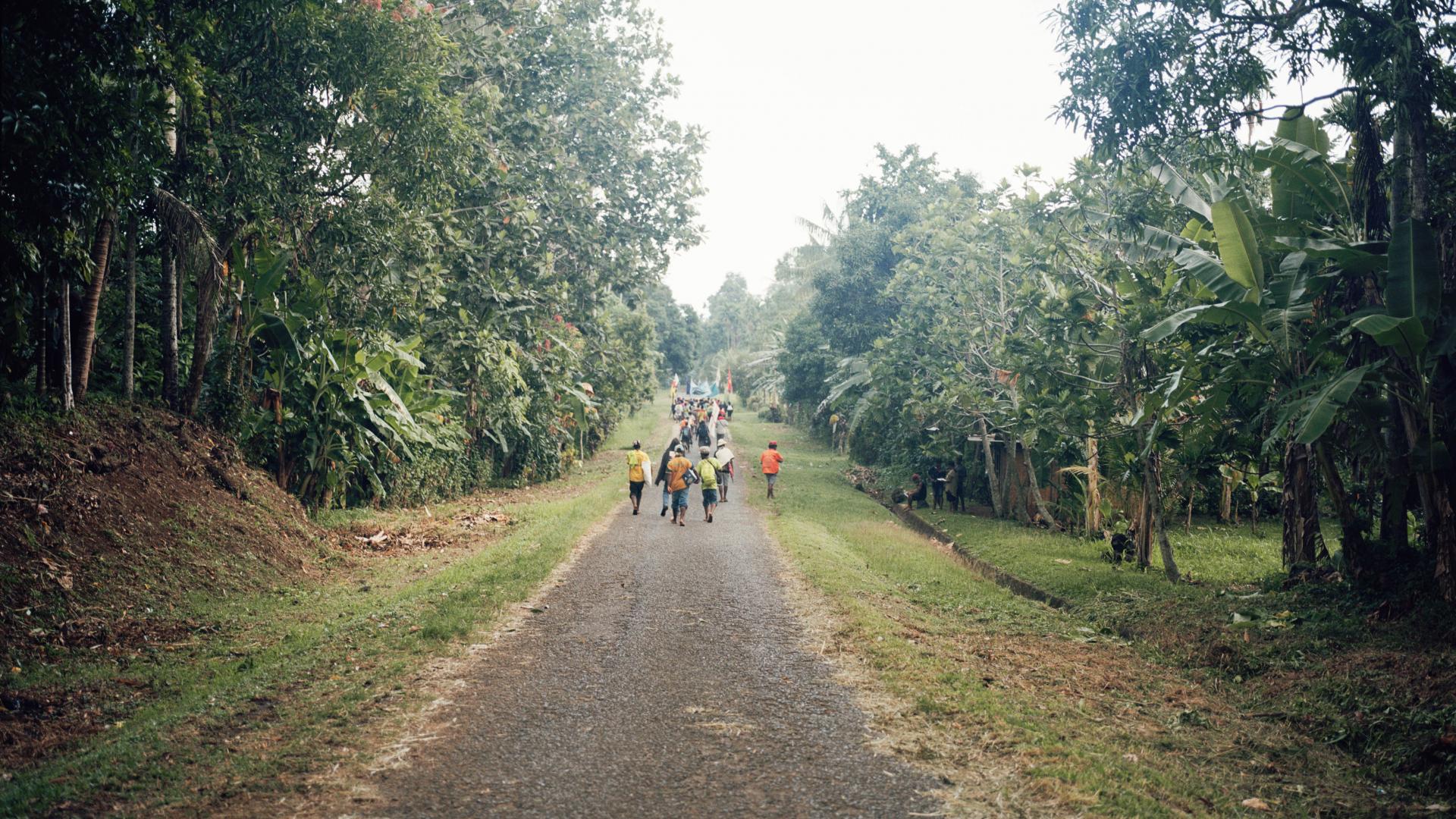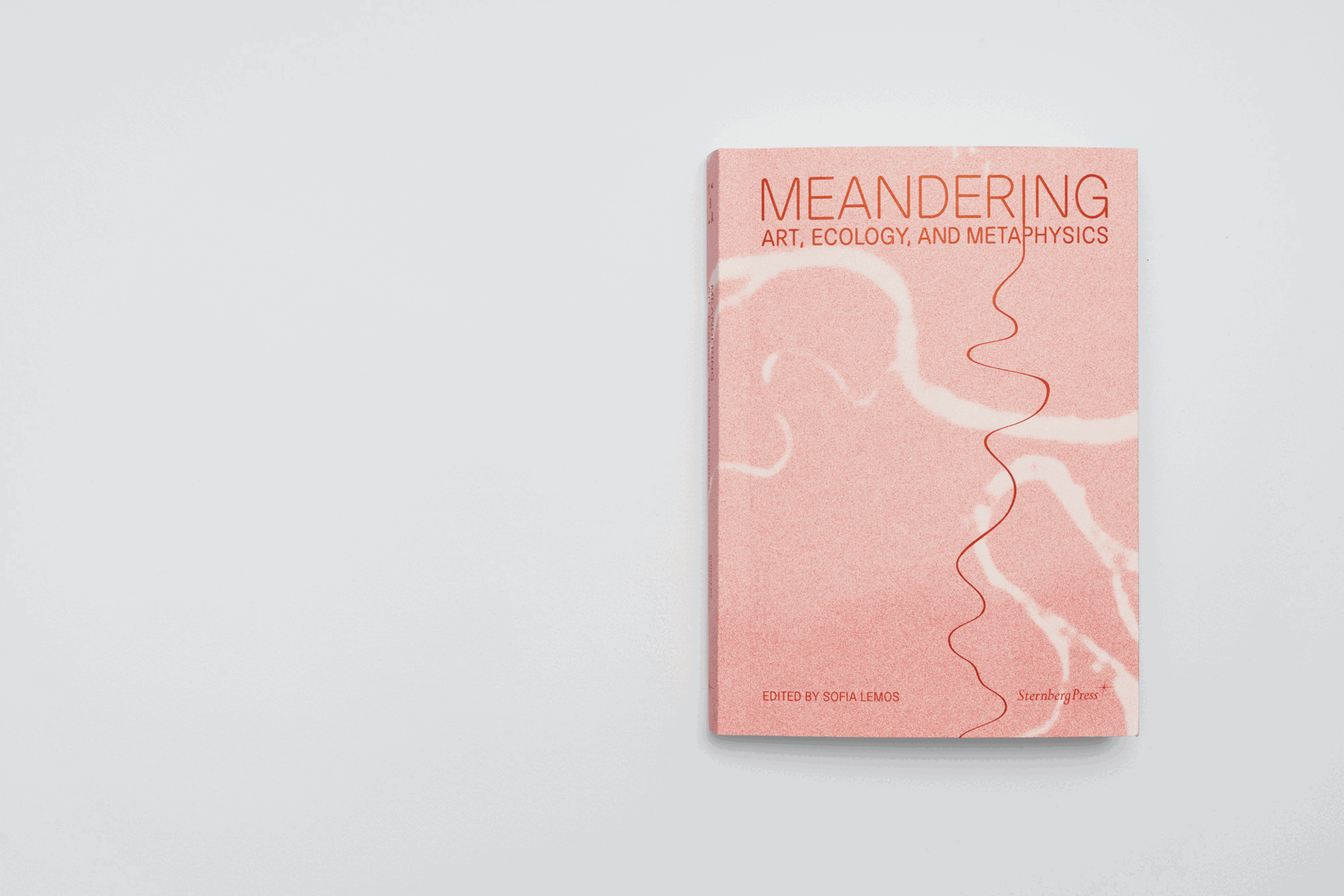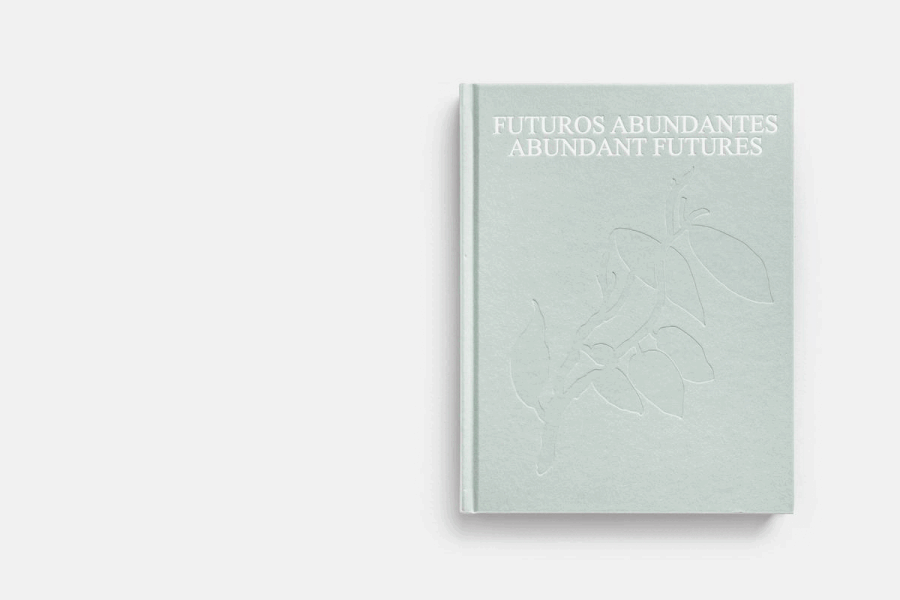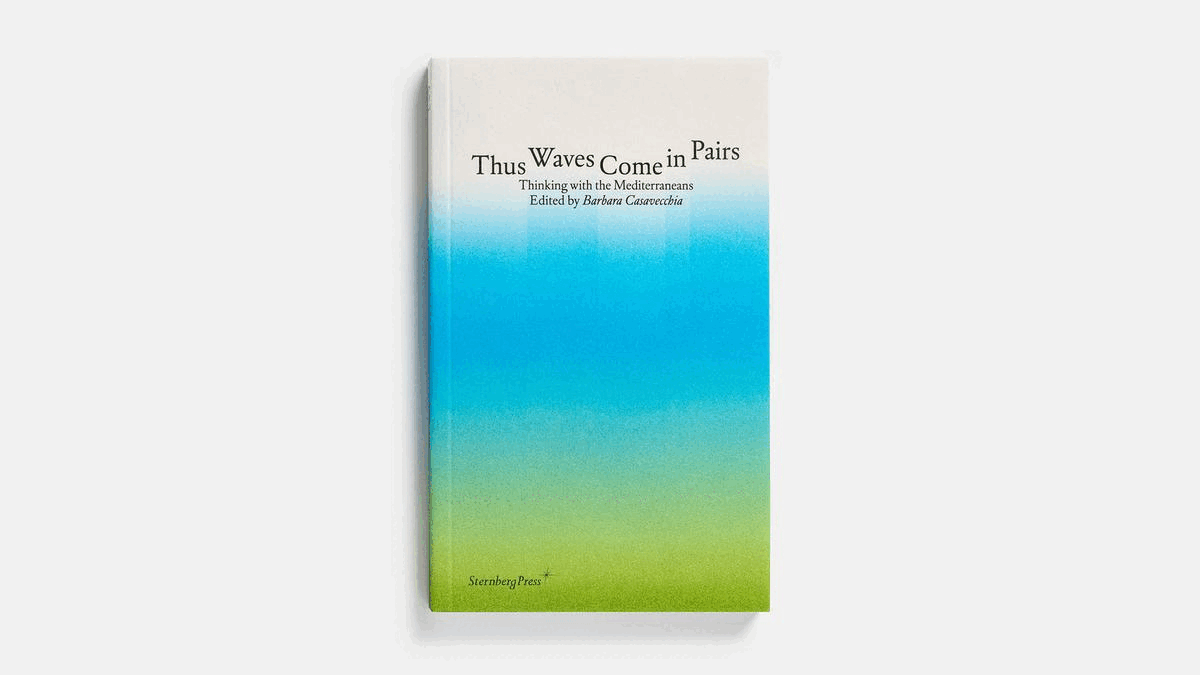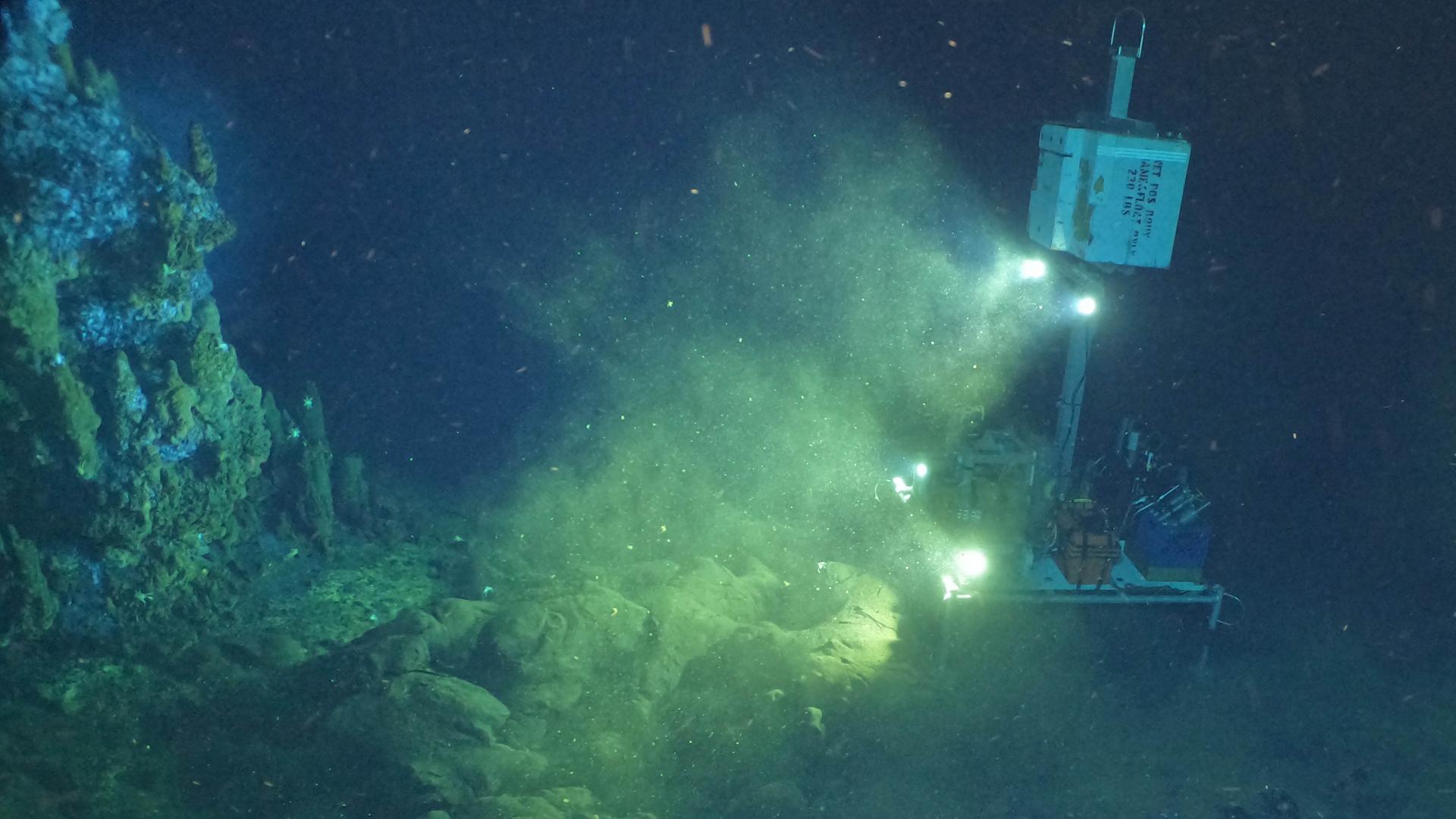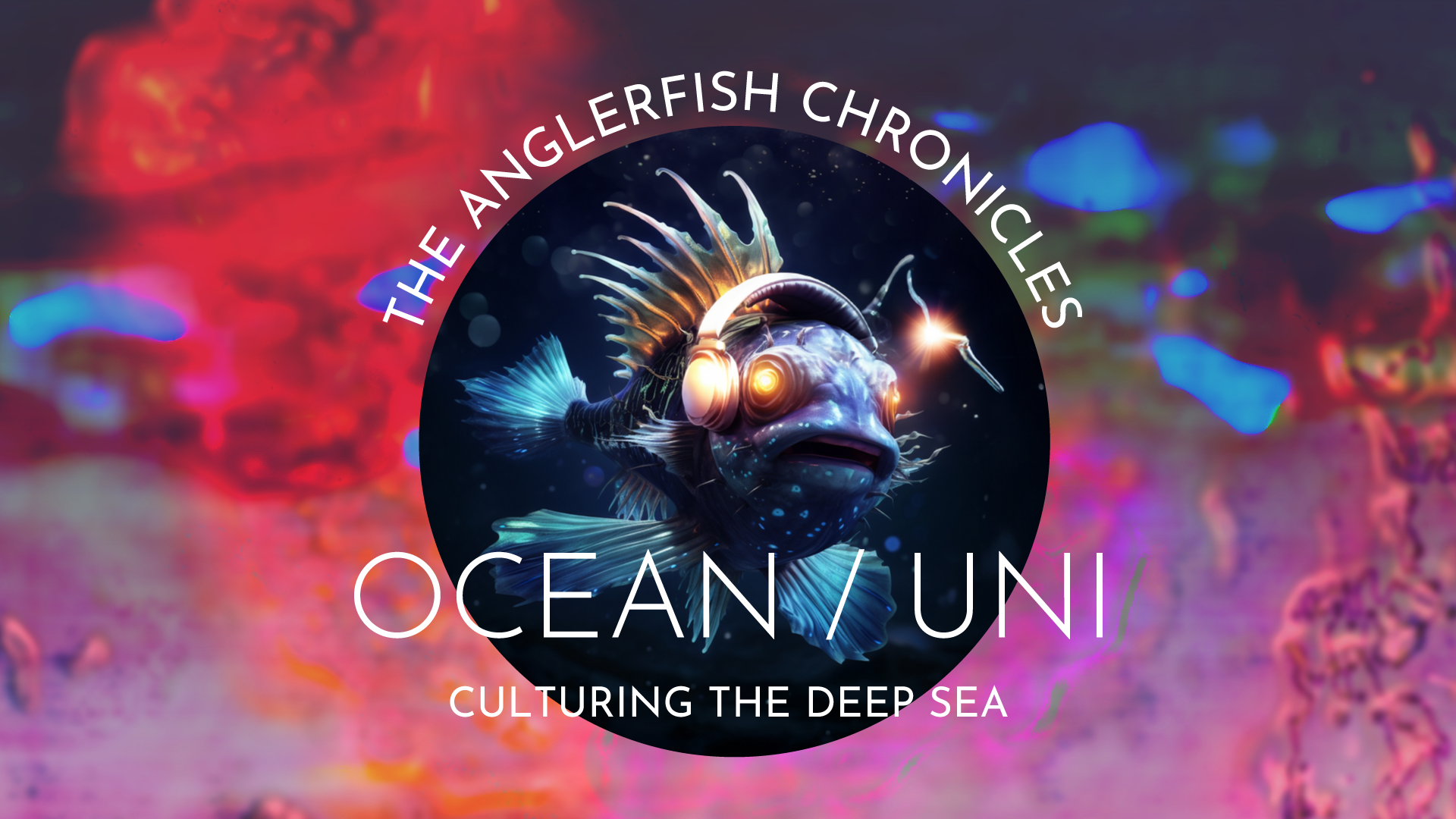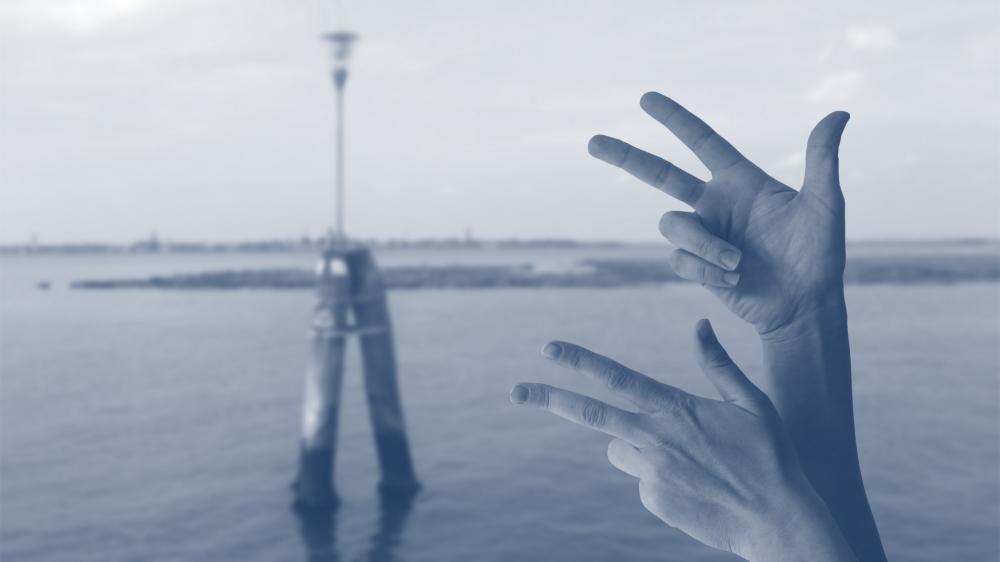Western Flag (Spindletop, Texas), 2017
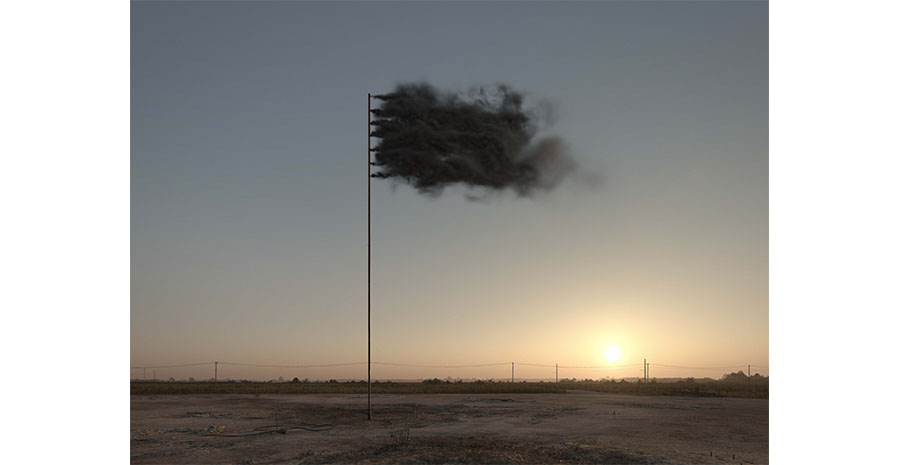
Still: Courtesy the artist | Thomas Dane Gallery, London

Still: Courtesy the artist | Thomas Dane Gallery, London

Still: Courtesy the artist | Thomas Dane Gallery, London

Installation view: John Gerrard: Western Flag (Spindletop, Texas) 2017, Museo Nacional Thyssen-Bornemisza, Madrid, Spain, 2019
Photo: Roberto Ruiz | TBA21
Photo: Roberto Ruiz | TBA21
Collection
Single-channel software simulation
Overall dimensions variable
Commissioned by Channel 4, in partnership with Somerset House
“One of the greatest legacies of the 20th century is not just population explosion or better living standards but vastly raised carbon dioxide levels in the atmosphere. A new flag attempts to give this invisible gas, this international risk, an image, a way to represent itself. I like to think of it as a flag for a new kind of world order.”[1]
Originally commissioned by Channel 4 to commemorate Earth Day in 2017, John Gerrard’s Western Flag (Spindletop, Texas) has since been installed in various locations across the world, operating with visual simplicity as a symbolic red flag for the irreversible effects of human-induced climate change on our planet. First designed to function as an interruptive artwork that would be broadcast in short bursts between C4’s usual transmissions, Western Flag borrows much of its style and technique of emphatic simplicity from advertising: the power of the work derives from its capacity to convey its message in spite of the potential brevity of its display. Since those original broadcasts, Western Flag has benefitted from lengthier broadcasts in installations as public sculpture at Somerset House in London in 2017, and at Hamburg Rathausmarkt in 2019, as well as at Museo Nacional Thyssen-Bornemisza in Madrid, Spain, and Desert X, Coachella Valley, Southern California, both 2019. In many ways, however, its premise in the domain of advertising continues to determine the nature of the work, shaping the quality of its function and display regardless of the varying specificity of its installation. Like other works by Gerrard, Western Flag is a computer simulation: its literal makeup consists of computer software, installed on an LED wall, a material also borrowed from advertising, which enables the work to be viewed as well in broad daylight as it is in darker surroundings.
The work shows a flag in a marked spot at the site of the “Lucas Gusher”, the first major oil strike in the modern history of the United States, which erupted in January 1901 in Beaumont, Texas. Releasing petroleum at an estimated rate of 100,000 barrels per day, the Spindletop discovery went on to increase the production of oil in the United States by three times. Gerrard's flag, which represents what he views as a form of “invisible sculpture,” is a virtual creation planted in a virtual reproduction of a real site, built using data and imagery collected from 10-15,000 photographs taken from a drone survey of the designated area. Against a backdrop that is synched with real time, the flag billows black smoke, giving face to the clouds of CO2 released into the air by the oil industry, as the sun rises and sets in accordance with the Texan time zone. The smoke, which undulates consistently as the day evolves into night, contributes to a sense of the work’s duration as a moving image work. However, it is an important feature of the work’s process, technological components, and rudimentary character that it is not definable in the terms usually applied to cinema, film, or video works: “the only duration this work has is an energetic one: it has to be powered in order to exist.”[2] While Gerrard’s works look like films and videos, they use real-time computer graphics developed by the military and most commonly used in the gaming industry to recreate real sites in real time, as opposed to the fictional settings which background video game narratives. The results, as exemplified in Western Flag, are very convincing and might be viewed and scapes of virtual symmetry or reflection.
As Emily Hall has suggested in a piece written for Art Forum, the strange combination of concepts, materials, and subject matter which come together in Western Flag has the effect of reinforcing the ultimate provisionality of “things we take on faith,” notably oil and all that it delivers: comfort and mobility.[3] Nowhere is the parallel more significant than in the total impermanence of the work’s manufactured image. Describing his process, Gerrard has written, “fundamentally, while this looks like cinema as such, there is no image ‘shot’, no record of every image. The images are produced and discarded, instantly. In a sense, the only record of that moment in time is the public’s relationship to it, similar to the public’s relation to the real. It flashes on ‘the mind’s eye’ and is then lost and retained as a memory.”[4] Its process thus constitutes another way that Western Flag draws on the corpus of psychological techniques employed in consumer advertising, producing a minimal but stimulating image, capable of sustaining an impact long after its absence. In this manner, and years after its first televised broadcast with C4 in 2017, Western Flag continues its operation as a warning of destruction, resource conflict, and environmental damage to all those who retain its image, following their encounter with its ominous virtual reality.
— Elsa Gray
[1] The artist, quoted from http://westernflag.johngerrard.net
[2] John Gerrard speaking for TateShots, available at https://www.youtube.com/watch?v=RCVCqbqwSN0
[3] Available at https://www.artforum.com/print/reviews/201102/john-gerrard-38844
[4] John Gerrard in conversation with Adam Kleinman in Defne Ayas, Natasha Hoare and Adam Kleinman, eds., Art In The Age Of… (Rotterdam, Netherlands: Witte de With Center for Contemporary Art, 2015), 142.
Overall dimensions variable
Commissioned by Channel 4, in partnership with Somerset House
“One of the greatest legacies of the 20th century is not just population explosion or better living standards but vastly raised carbon dioxide levels in the atmosphere. A new flag attempts to give this invisible gas, this international risk, an image, a way to represent itself. I like to think of it as a flag for a new kind of world order.”[1]
Originally commissioned by Channel 4 to commemorate Earth Day in 2017, John Gerrard’s Western Flag (Spindletop, Texas) has since been installed in various locations across the world, operating with visual simplicity as a symbolic red flag for the irreversible effects of human-induced climate change on our planet. First designed to function as an interruptive artwork that would be broadcast in short bursts between C4’s usual transmissions, Western Flag borrows much of its style and technique of emphatic simplicity from advertising: the power of the work derives from its capacity to convey its message in spite of the potential brevity of its display. Since those original broadcasts, Western Flag has benefitted from lengthier broadcasts in installations as public sculpture at Somerset House in London in 2017, and at Hamburg Rathausmarkt in 2019, as well as at Museo Nacional Thyssen-Bornemisza in Madrid, Spain, and Desert X, Coachella Valley, Southern California, both 2019. In many ways, however, its premise in the domain of advertising continues to determine the nature of the work, shaping the quality of its function and display regardless of the varying specificity of its installation. Like other works by Gerrard, Western Flag is a computer simulation: its literal makeup consists of computer software, installed on an LED wall, a material also borrowed from advertising, which enables the work to be viewed as well in broad daylight as it is in darker surroundings.
The work shows a flag in a marked spot at the site of the “Lucas Gusher”, the first major oil strike in the modern history of the United States, which erupted in January 1901 in Beaumont, Texas. Releasing petroleum at an estimated rate of 100,000 barrels per day, the Spindletop discovery went on to increase the production of oil in the United States by three times. Gerrard's flag, which represents what he views as a form of “invisible sculpture,” is a virtual creation planted in a virtual reproduction of a real site, built using data and imagery collected from 10-15,000 photographs taken from a drone survey of the designated area. Against a backdrop that is synched with real time, the flag billows black smoke, giving face to the clouds of CO2 released into the air by the oil industry, as the sun rises and sets in accordance with the Texan time zone. The smoke, which undulates consistently as the day evolves into night, contributes to a sense of the work’s duration as a moving image work. However, it is an important feature of the work’s process, technological components, and rudimentary character that it is not definable in the terms usually applied to cinema, film, or video works: “the only duration this work has is an energetic one: it has to be powered in order to exist.”[2] While Gerrard’s works look like films and videos, they use real-time computer graphics developed by the military and most commonly used in the gaming industry to recreate real sites in real time, as opposed to the fictional settings which background video game narratives. The results, as exemplified in Western Flag, are very convincing and might be viewed and scapes of virtual symmetry or reflection.
As Emily Hall has suggested in a piece written for Art Forum, the strange combination of concepts, materials, and subject matter which come together in Western Flag has the effect of reinforcing the ultimate provisionality of “things we take on faith,” notably oil and all that it delivers: comfort and mobility.[3] Nowhere is the parallel more significant than in the total impermanence of the work’s manufactured image. Describing his process, Gerrard has written, “fundamentally, while this looks like cinema as such, there is no image ‘shot’, no record of every image. The images are produced and discarded, instantly. In a sense, the only record of that moment in time is the public’s relationship to it, similar to the public’s relation to the real. It flashes on ‘the mind’s eye’ and is then lost and retained as a memory.”[4] Its process thus constitutes another way that Western Flag draws on the corpus of psychological techniques employed in consumer advertising, producing a minimal but stimulating image, capable of sustaining an impact long after its absence. In this manner, and years after its first televised broadcast with C4 in 2017, Western Flag continues its operation as a warning of destruction, resource conflict, and environmental damage to all those who retain its image, following their encounter with its ominous virtual reality.
— Elsa Gray
[1] The artist, quoted from http://westernflag.johngerrard.net
[2] John Gerrard speaking for TateShots, available at https://www.youtube.com/watch?v=RCVCqbqwSN0
[3] Available at https://www.artforum.com/print/reviews/201102/john-gerrard-38844
[4] John Gerrard in conversation with Adam Kleinman in Defne Ayas, Natasha Hoare and Adam Kleinman, eds., Art In The Age Of… (Rotterdam, Netherlands: Witte de With Center for Contemporary Art, 2015), 142.
John Gerrard, (born 20 July 1974) is an Irish artist, working in Dublin and Vienna, best known for his sculptures, which typically take the form of digital simulations displayed using Real-time computer graphics.
Gerrard received a BFA from The Ruskin School of Drawing and Fine Art, Oxford University. During this time he made his first experiments with 3D scanning as a form of sculptural photography. He undertook postgraduate studies at The School of The Art Institute of Chicago and Trinity College, Dublin, and in 2002 was awarded a Pépinières Residency at Ars Electronica, Linz, where he developed his first works in 3D Real-time computer graphics. In June 2009 he began a six-month guest residency at the Rijksakademie van Beeldende Kunsten, Amsterdam. During 2012 he was Legacy Fellow at Magdalen College, Oxford, working on Exercise (Djibouti) 2012, a commission for Modern Art Oxford and the London 2012 Festival.
This biography is from Wikipedia under an Attribution-ShareAlike Creative Commons License.
Gerrard received a BFA from The Ruskin School of Drawing and Fine Art, Oxford University. During this time he made his first experiments with 3D scanning as a form of sculptural photography. He undertook postgraduate studies at The School of The Art Institute of Chicago and Trinity College, Dublin, and in 2002 was awarded a Pépinières Residency at Ars Electronica, Linz, where he developed his first works in 3D Real-time computer graphics. In June 2009 he began a six-month guest residency at the Rijksakademie van Beeldende Kunsten, Amsterdam. During 2012 he was Legacy Fellow at Magdalen College, Oxford, working on Exercise (Djibouti) 2012, a commission for Modern Art Oxford and the London 2012 Festival.
This biography is from Wikipedia under an Attribution-ShareAlike Creative Commons License.



